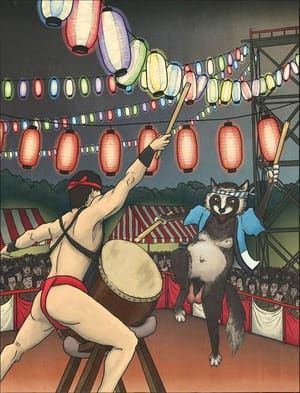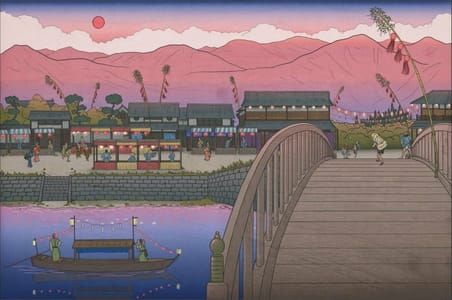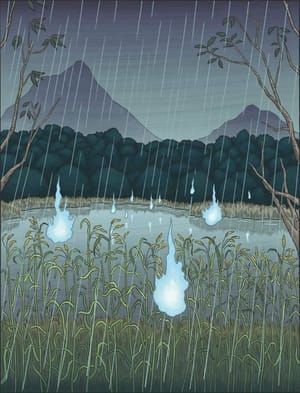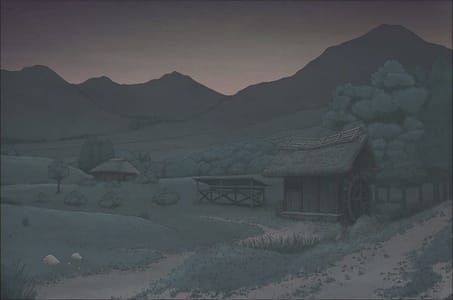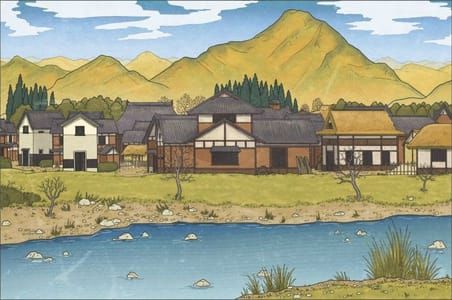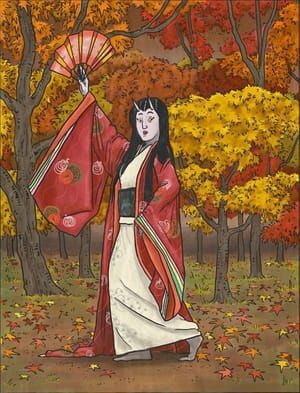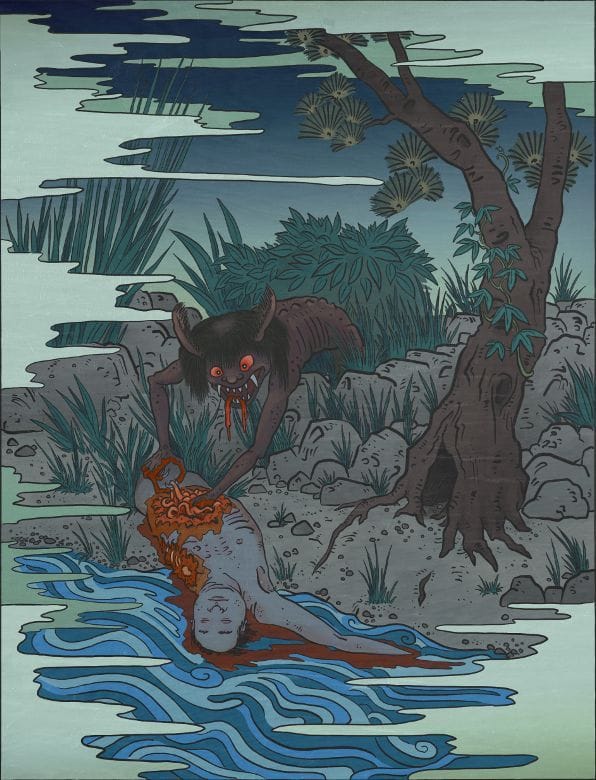

Mōryō, 2014
Matthew Meyer
魍魎
Mōryō is a general term, like chimi, for a large number of nature spirits that live in the wilderness. In particular, while chimi refers to mountain and swamp spirits, mōryō refers to water spirits. They are said to look like children about three years old, with red or black skin, red eyes, long ears, and long, beautiful hair.
Mōryō feed upon the bodies of dead humans. As such, they like to rob graves, digging corpses up out of the ground to feast upon the rotting innards. They also interrupt funerals, using magic to distract the attendees and stealing the corpses from their coffins while nobody is looking. Because of these behaviors, they are especially troublesome, and so special methods have been invented to prevent such disturbances to the deceased.
Mōryō are afraid of oak trees and tigers. As a result of this, in ancient China it was common to plant oak trees in graveyards, and to adorn the roads leading into and out of graveyards with stone tigers. Additionally, prior to interring a casket in the ground, a servant would enter the grave hold and prod around with a spear to make sure no mōryō were hiding in the grave. These practices did not catch on in Japan.
Mōryō first appear in ancient Chinese records, where they are said to be minor nature spirits or demons. In Japan, they are said to be water kami, and cooperate alongside chimi, minor kami of the mountains. Many kinds of yokai can be classified as mōryō, one of the most famous examples being the kappa.
In Mimibukuro, a collection of folktales collected during the Edo period, a story of a mōryō disguised as a human is recorded. A government official named Shibata had a very loyal servant, who one evening, out of the blue, informed Shibata that he would be leaving his service. When asked why, the man replied that he was not actually a human, but a mōryō in disguise, and his turn had come up to steal corpses; thus, the next day he would have to travel to a nearby village and due his duty as a mōryō. Sure enough, the next day, the servant had vanished, and at the same time, in the village he had mentioned, dark clouds suddenly descended upon a funeral service. When the clouds cleared away, the corpse was missing from the coffin!
Matthew Meyer
artistArthur
Wait what?


